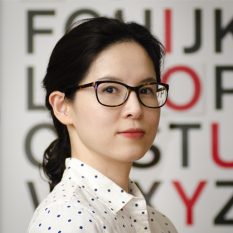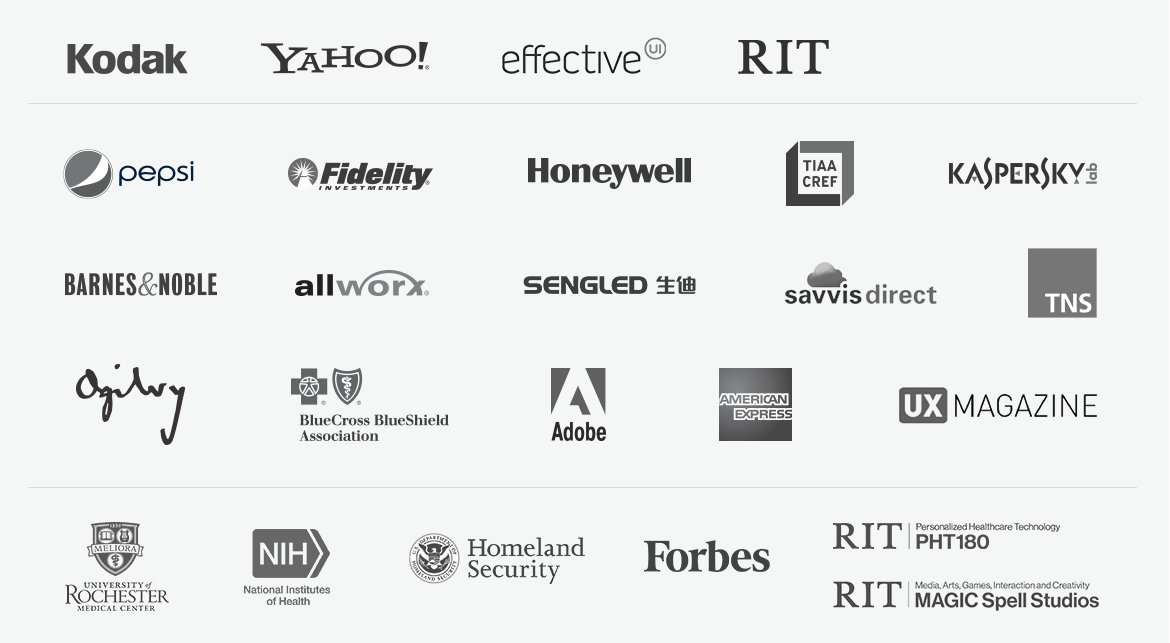As an award-winning and patent-holding designer specializing in user interface (UI) and user experience (UX) design, Hye-Jin Nae brings her diverse and detail-orientated drive to every project and class she encounters. Originally from South Korea with a background in clothing and textile design, Hye-Jin came to the US to pursue a degree in graphic design, followed by an advanced degree, MFA, in computer graphics design. Post education, Hye-Jin led digital consumer projects in UI/UX design for Kodak, Yahoo, and EffectiveUI. In addition to her professional work, Hye-Jin returned to academia as a tenure-track faculty in the New Media Design program at RIT. Hye-Jin continues to leverage her professional experiences by integrating design in the National Institute of Health (NIH), Department of Homeland Security (DHS), and industry sponsored research projects. She was also a contributing member of a startup healthcare company with fellow RIT alumni and researchers. Hye-Jin combines her unique professional, research, and academic expertise to expand the reach and impact of design through her multidisciplinary classes.
Research Focus
Hye-Jin’s domain experiences in UI/UX design and visual communication design have carried over into her research. She focuses on leveraging the design process and capabilities to build bridges between diverse research areas and individuals. Hye-Jin utilizes her professional digital UI/UX application design and product development experience in various funded research projects. As a PI for the DHS grant, contributing her expertise and design approach as a Co-PI in a large-scale NIH grant, Hye-Jin is expanding the value and integration of design in research.
In early 2020, Hye-Jin (PI) and Assistant Professor Miguel Cardona (Co-PI) published Ex-Out Creativity Handbook, an Apple and Android mobile application based on a $149,955 federal grant project. She continues to expand her research as Co-PI on an NIH awarded five-year $2,990,975 grant. The Ex-Out research project and mobile application are an applied design guide and open-access digital system to help others create awareness to stop the spread of hate and violence online. Project solutions were created by leveraging emerging tools with a diverse undergraduate and graduate design student research team. The project and researchers received notable recognitions and an invitation for the innovation and creativity panel at the Digital Forum at CMU. They were also selected to present in the innovative technology session at Ithaca College, CLS conference at MIT, Design Practices and Principles conference at UDEM, and UCDA Design Education Summit. The project received multiple awards, such as Gold from Indigo Awards, Bronze from IDA awards, Gold from the American Advertising Awards, Gold, Excellence, and Judge’s choice awards from UCDA Design Awards, Winner from American Web Design Awards, Finalist from Communication Arts Design Competition, and a Nominee from the Webby Awards. The project also received the RIT CAD Frank J. Romano Endowed Prize.
In Hye-Jin’s ongoing NIH funded project, Inconspicuous Daily Monitoring to Reduce Heart Failure (HF) Hospitalizations, her ability to research, plan, design, and test user experience solutions across a broad spectrum of product spaces will allow for the research project to effectively integrate the data capture and medical review requirements of the project. As a part of the multidisciplinary research team, Hye-Jin’s data visualization combine Electronic Medical Record (EMR), the Fully Integrated Toilet (FIT) seat data, an AI early alert system, and a patient’s daily wellness into a data-driven interactive tool for Heart Failure (HF) physicians review and analysis. Her industry and academic experience allow her to drive applied design research across multiple domains.
As a professional designer at Kodak, Yahoo, and EffectiveUI, Hye-Jin has had the opportunity to work on projects ranging from the Superbowl to future consumer digital product interfaces. Across all of these diverse projects, she has contributed to expanding and understanding of design’s role and power as a critical aspect of building effective products and companies. At RIT, Hye-Jin continues engaging researchers across various disciplines to contribute her design research and application expertise. Design is not a service to these projects but plays a central role in the planning, research, and enrichment of the core research outcomes. Hye-Jin has established a track record as a PI and Co-PI on various DHS and NIH grants and proposals through her relationships with the MAGIC Center, the PHT180 research group, and affiliated researchers. She looks forward to continuing her investigation and application of design across a broad range of domains and partnerships.


